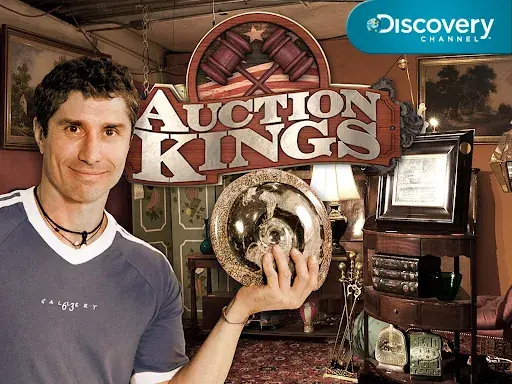Who invented the idea of jewelry for self-adornment, and when? It goes back farther than you think – much farther
ESSEX, U.K. – Beauty, status and identity – those are the three reasons why personal adornment with jewelry is likely to have begun. But just how far back does the concept of jewelry go, what types of materials were used in the beginning, and how did each subsequent culture contribute to the art form’s evolution?

Jewelry has ancient origins, which is why most significant pieces from past millennia are usually available only from high-end auction houses where experts can identify and appraise them. Often, considerable time is invested by auction houses prior to accepting ancient jewelry consignments. They undertake careful research and look into each item’s possible prior ownership to ensure it is accurately described. Potential buyers are advised to make sure any auction house from which they buy ancient jewelry adheres to strong guidelines and that the firm is reputable and of long standing.
To begin the story that led to today’s penchant for wearing distinctive, hand-crafted jewelry, we have to go back to prehistoric times, when early humans first adorned themselves with natural objects such as shells, bones, and stones. The primary motive of self-decoration is believed to have been the desire to stand apart from others, but there might also have been a spiritual connection to the practice.
Several beads made from Nassarius gibbosulus (sea snail) shells are thought to be the earliest known forms of personal adornment. Two shell beads found in Skhul Cave on the slopes of Mount Carmel, Israel, are estimated to be 100,000 years old, while another found at Oued Djebbana, Algeria, is believed to be 90,000 years old. A further group of pierced shells, some with red ochre, from the Aterian levels at the Taforalt site in Morocco have been securely dated to about 82,000 years ago. All of these examples pre-date several 75,000-year-old Nassarius kraussianus beads that were found at Blombos Cave, South Africa, which previously had been assumed to be the oldest forms of jewelry.
As societies evolved through the ages, so did the materials used in fashioning jewelry. Gold and silver became a staple in jewelry-making around 3000 BCE in Mesopotamia and Egypt. Gemstones would follow, starting with lapis lazuli and turquoise. In their era, ancient Roman metalsmiths raised the bar on aesthetics by incorporating semi-precious stones such as garnets, emeralds, jasper and lapis imported from Egypt, as well as onyx, amber and moonstone sourced from the Persian Gulf.
Each culture with a jewelry tradition has made its own distinct contribution, from the Egyptians who perfected filigree work, to Mesoamericans who produced incredible jade designs, to Vikings, whose geometric and abstract zoomorphic patterns set them apart from other medieval metalsmiths.
Let’s take a chronological journey through the world of ancient jewelry by examining a few of the highlights from the opening day of an auction series taking place December 2-6. The company hosting the sale is TimeLine, a British antiquities auction house with roots dating back to a firm of specialist dealers who launched their business in 1858.
- Bactrian gold pendant with agate cabochon, 4th-2nd century B.C. Estimate: £3,000-£4,000 ($4,020-$5,360)
- Romano Egyptian gold ring with garnet intaglio depicting a duck, 1st century B.C. to 1st century A.D. Estimate: £3,000-£4,000 ($4,020-$5,360)
- 1st century A.D. Roman sard (translucent chalcedony) intaglio carved with classical intaglio profile image of a large panther. Estimate £2,000-£3,000 ($2,680-$4,020)
- Roman gold spiral-twisted wire bracelet with a central bezel, 2nd-3rd century A.D. Elegant and surprisingly contemporary in appearance. Estimate £4,000-£6,000 ($5,360-$8,040)
- 2nd-3rd century A.D. Roman garnet gemstone with bust of Empress Julia Domna, one of the most influential women of the Imperial Roman world. Estimate: £3,000-£4,000 ($4,020-$5,360)
- Migration Period gold ring with nicolo and garnet cloisonnes on sides, 4th-5th century A.D, Eastern Europe. Estimate: £10,000-£14,000 ($13,400-$18,750)
- Byzantine gold ring, 6th-9th century A.D., with personal inscription that translates to ‘belonging to Mary and Eutropius.’ Estimate: £5,000-£7,000 ($6,700-$9,380)
- Seljuk (Turkish dynasty) braided gold bracelet with fluted body, 11th-13th century A.D., Estimate: £3,000-£4,000 ($4,020-$5,360)
- The ‘Otterington Hall’ medieval gold ring, 1450-1550 A.D., engraved with image of Saint Christopher carrying the Christ Child on his back. Found by a metal detectorist in England in 2024, declared a National Treasure and subsequently ‘disclaimed’ by The Crown, hence cleared for private ownership. Estimate £4,000-£6,000 ($5,360-$8,040)
- Charming Renaissance gold and enamel ring with vivid ruby and fine enamel work, Western European, late 16th century A.D. Estimate £4,500-£5,500 ($6,030-$7,370)
TimeLine’s 2-6, 2025 auction will be held live at the company’s headquarters located at The Court House, 363 Main Rd., Harwich, Essex CO12 4DN, UK. All lots featured in this article (and in TimeLine’s printed catalog) will be auctioned during the Dec. 2 opening session. Internet bidders may pre-register online. Goods may be previewed in person at the gallery by prior arrangement only. Auction start time: 7am US Eastern time/12pm (midday) GMT. All remote forms of bidding will be available, including absentee, by phone (please book phone line 48 hours ahead of time) or live via the Internet through TimeLine’s bidding platform or LiveAuctioneers. TimeLine Auctions accepts payments in GBP and ships worldwide. Questions: call +44 7494 866514 or email Aaron Hammond at [email protected]. Website: https://timelineauctions.com.









